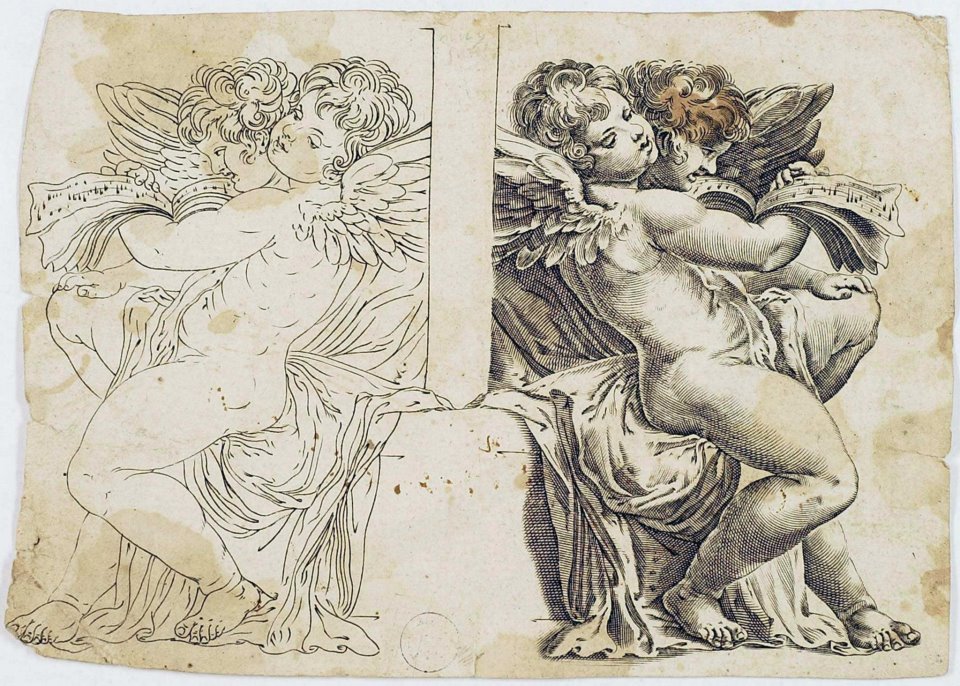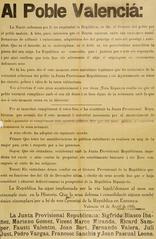
Valencian Library Visiting Hours, Tickets, and Historical Sites in Valencia
Date: 14/06/2025
Introduction: A Window into Valencia’s Heritage
The Valencian Library stands as a beacon of the region’s cultural and bibliographic heritage, offering visitors a unique experience at the crossroads of history, architecture, and community engagement. Whether housed in the Renaissance Monastery of San Miguel de los Reyes or the historic General Hospital in Valencia’s old quarter, it is not simply a repository of books, but a living testament to Valencia’s enduring legacy. From Roman origins to modern-day community programming, the library invites travelers, students, and history lovers to explore its collections, architecture, and vibrant role in Valencian life (Visit Valencia, Valencia Tourist Guide, Spain.info).
Table of Contents
- Introduction
- Historical Foundations: From Roman Valentia to Modern Library
- Medieval and Renaissance Transformations
- Modern Era Adaptation: Hospital to Library
- Architectural Highlights and Layout
- Collections and Exhibitions
- Visitor Information: Hours, Tickets, Accessibility
- Community Engagement and Cultural Role
- Nearby Attractions
- Visitor Tips and Practical Information
- Frequently Asked Questions (FAQs)
- Conclusion and Call to Action
- References
Historical Foundations: From Roman Valentia to Modern Library
Valencia’s origins date back to 138 BC, founded as “Valentia” by the Romans (Valencia Tourist Travel Guide). The city has since been shaped by a succession of cultures—Greeks, Phoenicians, Visigoths, and Moors—each leaving an indelible mark. The present site of the Valencian Library, whether in the historic General Hospital or the Monastery of San Miguel de los Reyes, has long occupied a prominent place in Valencia’s evolving urban and social life.
Medieval and Renaissance Transformations
The Middle Ages marked Valencia as a thriving cultural and economic center. Its “Golden Age” in the 15th century saw the rise of iconic monuments such as La Lonja de la Seda and the Palau de la Generalitat. The General Hospital, which would later become a library, was established in this era, reflecting both the city’s prosperity and its commitment to public welfare. The hospital’s architectural evolution—combining Gothic, Renaissance, and Baroque features—mirrored the city’s own transformation and its growing emphasis on learning and charity (Visit Valencia).
Modern Era Adaptation: Hospital to Library
In 1979, the former General Hospital was officially repurposed as the Biblioteca Pública de Valencia. Restoration efforts by architects Alberto Peñin and Guillermo Stuyck integrated original elements with modern amenities, preserving the building’s historical integrity (Visit Valencia). Salvaged artifacts are displayed in the gardens, connecting visitors to the site’s layered past. The adaptive reuse underscores Valencia’s dedication to preserving its architectural landmarks while meeting contemporary cultural needs.
Architectural Highlights and Layout
Unique Design Features
The library’s architecture is a harmonious blend of history and innovation. Notably, the Public Library of Valencia features a rare Greek cross floor plan that organizes spaces for different library services, optimizing accessibility and flow (Wikipedia). The Monastery of San Miguel de los Reyes, housing the Biblioteca Valenciana Nicolau Primitiu, is an outstanding example of Spanish Renaissance architecture, with its grand cloisters, vaulted ceilings, and serene gardens (Spain.info).
Interior and Artistic Elements
The interiors balance functionality with artistic heritage. Materials like wood, stone, and glass create a warm atmosphere, while Valencian ceramics and mosaics pay tribute to local artisanal traditions (Veebrant). Abundant natural light enhances reading rooms and communal spaces, making the library inviting for all visitors.
Collections and Exhibitions
The Valencian Library is the principal repository of the region’s bibliographic heritage, boasting nearly one million items:
- Manuscripts & Incunabula: Including the municipal charter of Sant Mateu (1274) and more than 50 incunabula volumes.
- Printed Books: Works by Valencian authors and literature related to the region.
- Legal Deposit: Comprehensive coverage of all published works within the Valencian Community.
- Special Collections: Such as the renowned Colección Cervantina.
- Periodicals: Over 14,000 titles, encompassing newspapers, magazines, and graphic publications.
- Audiovisual & Digital Media: Modern formats, including audio, video, and e-documents.
- Graphic Collections: Prints, posters, and photographs.
Temporary exhibitions and thematic displays regularly highlight the library’s rich holdings, often focusing on Valencian history and culture (Valencia Tourist Guide).
Visitor Information: Hours, Tickets, Accessibility
Locations
- Biblioteca Pública de Valencia: In the historic city center, housed in the former General Hospital.
- Biblioteca Valenciana Nicolau Primitiu: Located in the Monastery of San Miguel de los Reyes, accessible by metro (Line 6, “Machado”) and bus.
Opening Hours
-
Biblioteca Pública de Valencia:
Monday–Friday: 9:00 AM – 9:00 PM
Saturday: 9:00 AM – 2:00 PM
Sunday & Public Holidays: Closed -
Biblioteca Valenciana Nicolau Primitiu:
Monday–Friday: 9:00 AM – 8:00 PM
Saturday: 9:00 AM – 2:00 PM
Sunday & Public Holidays: Closed
(Hours may vary, check official sites for updates) -
Monastery of San Miguel de los Reyes (Visitor Center):
Tuesday–Saturday: 10:00 AM – 7:00 PM
Sunday: 10:00 AM – 2:00 PM
Monday: Closed
Tickets and Admission
- Entry to the libraries and exhibitions is free of charge.
- Special events or guided tours may require advance booking or a nominal fee.
Accessibility
Both libraries are fully accessible, featuring ramps, elevators, and adapted restrooms. Staff are available to assist visitors with special needs.
Community Engagement and Cultural Role
The library is more than a repository—it is a hub for lifelong learning and cultural exchange. Regular programs include:
- Guided Tours: Free, available in Spanish, Valencian, and occasionally English. Advance booking recommended.
- Workshops & Exhibitions: Covering literature, local history, and arts.
- Educational Activities: For schools, families, and researchers.
- Cultural Events: Aligned with major Valencian festivals such as Las Fallas and Semana Santa (ValenciaValencia.com).
The library’s collections and programming celebrate the region’s linguistic duality and cultural identity, with materials and events in both Spanish and Valencian (My Path in the World).
Nearby Attractions
The libraries’ central and northern locations place visitors within easy reach of other historical and cultural landmarks:
- La Lonja de la Seda: UNESCO World Heritage Site.
- Mercado Central: A vibrant local market.
- Turia Gardens: Urban green space ideal for walking and relaxation.
- City of Arts and Sciences: A modern icon of Valencia (Nomadic Matt).
- Benimaclet Neighborhood: Known for dining and cultural atmosphere.
Visitor Tips and Practical Information
- Plan Ahead: Consult the online catalogue and event calendar for special exhibitions.
- Photography: Permitted in most public areas (no flash/tripods); restrictions apply in rare book sections.
- Language: Staff generally speak Spanish, Valencian, and some English.
- Amenities: On-site café, vending machines, gift shop, Wi-Fi, and lockers available.
- Children: Welcome but must be supervised.
- Safety: CCTV and security staff ensure a safe environment; keep belongings secure.
- Sustainability: Energy-efficient facilities and recycling programs in place (Spain.info).
Frequently Asked Questions (FAQs)
Q: What are the Valencian Library’s opening hours?
A: Hours vary by location; generally, Monday to Friday 9:00 AM–8:00/9:00 PM, Saturdays 9:00 AM–2:00 PM, closed Sundays and holidays. Check the official website for details.
Q: Is there an admission fee?
A: No, entry is free for all visitors.
Q: Are guided tours available in English?
A: Tours are typically in Spanish and Valencian, with occasional English tours; advance booking is recommended.
Q: Is the library accessible for visitors with reduced mobility?
A: Yes, both locations are fully accessible.
Q: Can I take photos inside?
A: Yes, in most areas, but not in special collections or with flash/tripods.
Q: Are children allowed?
A: Yes, children are welcome with supervision.
Q: What nearby attractions can I visit?
A: The libraries are close to key sites like the Turia Gardens, Central Market, La Lonja, and Benimaclet neighborhood.
Conclusion and Call to Action
The Valencian Library, whether in the heart of the old city or the tranquil Monastery of San Miguel de los Reyes, offers a rich, immersive experience of Valencian culture, history, and architecture. Free admission, comprehensive accessibility, and vibrant programming make it an essential stop for anyone looking to deepen their understanding of Valencia.
Plan your visit today:
- Explore the latest exhibitions and events.
- Download the Audiala app for guided tours and insider tips.
- Combine your library visit with other Valencia historical sites for a full cultural experience.
- Stay informed via the official Biblioteca Valenciana website and local tourism portals.
For travel inspiration, library news, and cultural updates, follow us on social media and check out our related articles.
Visuals
Alt text: Valencian Library Renaissance façade showcasing historic architecture in Valencia
Alt text: Interior view of the Valencian Library reading room with vaulted ceilings and study spaces
Alt text: Serene gardens of the Monastery of San Miguel de los Reyes housing the Valencian Library
References
- Visiting the Valencian Library: Hours, Tickets, and Historical Insights, 2025, Visit Valencia (Visit Valencia)
- Public Library of Valencia: Architectural Marvel, Cultural Hub, and Visitor’s Guide, 2025, Wikipedia, Veebrant, Nomadic Matt (Wikipedia, Veebrant, Nomadic Matt)
- Visiting the Valencian Library: Hours, Tickets, and Historical Highlights in Valencia, 2025, Biblioteca Valenciana Nicolau Primitiu official sources (Biblioteca Valenciana)
- Valencian Library Visiting Hours, Tickets, and Guide to Valencia’s Historic Sites, 2025, Valencia Tourist Guide, Spain.info (Valencia Tourist Guide, Spain.info)











































